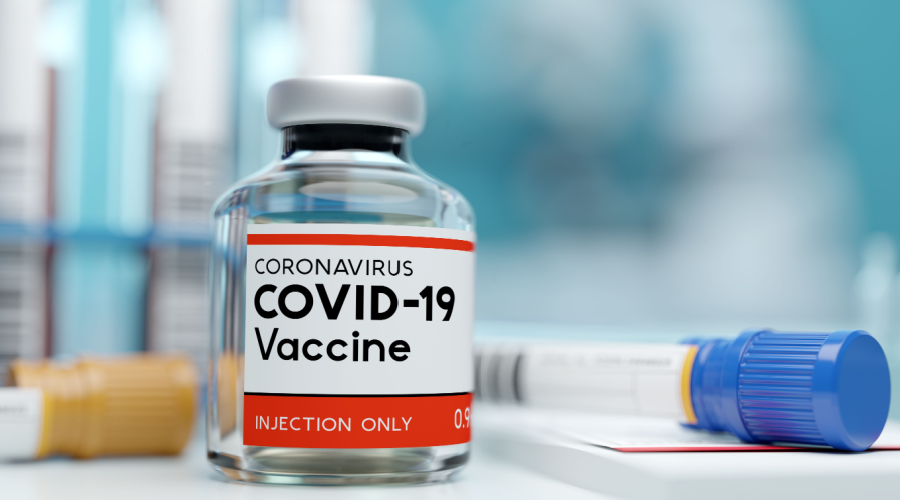Inside: Today’s pharmacy is so much more than prescriptions. Here’s how pharmacists are using preventive care to bring in more money, and where they can set their sights to expand.
With prescription margins getting slimmer all the time, the need for independent community pharmacies to diversify their streams of revenue has never been greater. That can include anything from changing your front-end selection to opening a compounding service.
For most pharmacies, preventive care presents the greatest opportunity. Nearly half of Americans over 40 say they would transfer their prescriptions to a pharmacy that provides preventive care services.
The Affordable Care Act has widened the clinical opportunity in recent years by ensuring patients with insurance can receive preventive care without out-of-pocket costs. Now many patients are seeking care they previously would have postponed or skipped entirely. That means more money coming your way.
These Are the Most Popular Preventive Care Services
Preventive care at the pharmacy is taking off all over the country as shrewd business owners look for new streams of income. Consider whether any of these preventive care services are right for your pharmacy.
1. Vaccines and immunizations
According to the NCPA Digest, 70 percent of independent pharmacies provided immunization services in 2017. Offering these services, if you don’t already, can help make your pharmacy a one-stop-shop for patients’ health care needs. These high-margin items will build your pharmacy’s reputation as a health care destination, not just a place to pick up prescriptions.
If you’re already providing some immunizations, look for ways to expand your offerings or appeal to a broader audience. Flu shots are an obvious choice for most pharmacies, but many insurances cover a wide range of vaccines with no co-pay, according to the CDC:
- Hepatitis A
- Hepatitis B
- Herpes Zoster (shingles)
- Human Papillomavirus (HPV)
- Measles, Mumps, Rubella (MMR)
- Meningococcal
- Pneumococcal
- Tetanus, Diphtheria, Pertussis (Tdap)
- Varicella (Chicken pox)
In the summer, position yourself as the go-to clinic for fast, easy back-to-school shots like HPV, MMR, TDP, meningococcal, and varicella.
When you ramp up your flu season marketing, include messaging for new parents and grandparents who may need Tdap boosters.
You can also market to older adults who need vaccines for shingles (50 and older) and pneumonia (65 and older).
2. Vitamins and supplements
The global dietary supplements market was valued at $133.1 billion in 2016 and is projected to increase in the years to come. Cash in on that growth by featuring popular vitamins and supplements at your pharmacy.
Many patients who want to take vitamins don’t which ones are right for them. Do they need more calcium or fiber? Should they take 1000 milligrams of vitamin C or 500 milligrams?
You can use your knowledge to advise patients about what vitamins or supplements would pair best with their medication regimen. In addition to guarding against negative interactions between drugs and supplements, you can recommend options for patients taking nutrient-depleting medications like beta blockers and antacids. The vitamins will help keep your patients healthy, and the extra items they buy will boost your bottom line.
3. Adherence programs
Working to help your patients improve their medication adherence can help them manage chronic diseases, curb symptoms and reduce the likelihood of complications.
It also helps your business by in several ways:
- Increases script count as patients abandon fewer prescriptions
- Increases new patients when you market your convenient adherence services
- Increases retention as patients appreciate the extra effort toward keeping them healthy
Eighty-eight percent of independent pharmacies have some kind of adherence program. If your business hasn’t tried it yet, here’s everything you need to know about starting an adherence program at your pharmacy.
4. Diabetes management
Thirty-five percent of independent community pharmacies offer diabetes training. That number could grow as the number of children diagnosed with the disease increases. Thirty million Americans now have diabetes, and eighty-four million Americans have prediabetes.
A diabetes management program can include a number of different services, depending on the needs of your community and your pharmacy’s resources:
- Educational classes
- Special promotions for supplementary diabetes products
- Blood glucose testing
- Medication reviews
- Diabetes-specific nutrition counseling
For more ideas about engaging diabetic patients, use the CDC’s action guide from the National Diabetes Prevention Program (NDPP). The action guide is aimed specifically at community pharmacists and outlines ways to raise awareness, screen and test patients, and assist them with lifestyle changes that will lead to better control of their condition. Pharmacies that offer the NDPP can be reimbursed by insurance for those services.
In addition, diabetes management programs give you an opportunity to sell supplemental products such as glucose tests, lancets, and syringes.
5. Lab tests
Pharmacies are increasingly working with other organizations to provide point-of-care testing and pharmacogenomics lab testing. NCPA has partnered with Ulta Lab Tests, which provides physician-approved laboratory testing services.
Lab tests present a lucrative opportunity: Seven billion lab tests are conducted annually. That’s 58 times larger than the market for flu shots.
And this new market isn’t only a chance to capture pharmacy revenue. “Offering lab testing services enables the pharmacy to differentiate itself from the competition,” said John Beckner, Senior Director of Strategic Initiatives at the National Community Pharmacists Association (NCPA). “They can bundle lab testing with immunizations and other patient care offerings to enhance their competitive position in the marketplace.”
Patients generally pay for the test out-of-pocket. They may also apply for reimbursement from their insurance company.
4 Pharmacy Preventive Care Services With High Health Outcomes
A 2016 article in Preventing Chronic Disease, a publication of the Centers for Disease Control and Prevention, looked at the role pharmacists play in preventive care.
“Because 90 percent of Americans live within five miles of a community pharmacy, there is opportunity for other health care and public health professionals to partner with community pharmacists to expand the population’s access to clinical preventive services,” the study’s authors explained.
The study examined documented cases of pharmacists conducting clinical preventive care and matched them with the US Preventive Services Task Force’s top health priorities to identify four areas where pharmacists are positioned to have the greatest impact.
6. Smoking cessation
Smoking’s health risks are well documented but tobacco use is still high in vulnerable populations, such as those living below the poverty line, racial and ethnic minorities, and Medicaid patients.
Quitting takes significant support, which is why the article recommends using the Ask, Advise, Refer (AAR) model to enroll patients in QuitLine’s free cessation program. AAR takes less than 5 minutes and allows pharmacists and pharmacy technicians to easily fit the model into their workflow.
In 2017, just 24 percent of independent community pharmacies offered smoking cessation services. Putting together an smoking cessation program can distinguish you from the competition, draw in new patients, and provide opportunity for increased sales.
In conjunction with a smoking cessation program, you can sell more front-end products like nicotine gum, lozenges, and patches.
7. Osteoporosis screenings
The authors of the study suggest investing in quantitative ultrasonography, a relatively affordable and accessible way to screen patients for osteoporosis. Quantitative ultrasonography can’t diagnose osteoporosis, but it can identify patients who are at risk and should be referred to clinician for diagnosis with dual-energy X-ray absorptiometry (DXA).
Experts say charging $30 to $40 per screening and performing three or four per week should be enough to reach profitability. Look for opportunities to contract with large employers, gyms, and nursing homes to bring in more patients.
The USPSTF recommends screening for osteoporosis in women age 60 and up, as well as younger women who are at increased risk. It is difficult but not impossible for pharmacies to receive reimbursement from private insurance and Medicare. Typically, you’ll need to partner with physicians to make it happen.
8. Testing for chronic diseases (like HIV)
Early detection of HIVE is crucial for successful treatment and provides a public health benefit. Undiagnosed HIV cases cause up to 33 percent of new infections, but making tests more accessible can change that.
Research suggests HIV testing programs at community pharmacies can be successfully implemented using existing pharmacy staff and workflows. For patients, the cost of point-of-care testing is similar to at-home kits (about $47 on site compared to $40 at home). Insured patients who are at higher risk may also have testing covered without a co-pay.
9. Folic acid counseling
Many women aren’t aware of the need for daily folic acid intake to prevent neural tube defects before conception and during early pregnancy. Supplementation is recommended for all women of childbearing age. Data from the March of Dimes says 90 percent of women would be likely to take a daily folic acid supplement if advised to by a healthcare provider.
Pharmacists can help meet these needs through several avenues:
- Live educational programing
- Medication therapy management that includes a folic acid supplement
- Promotional materials like posters and brochures
Promote these services during national observances like National Birth Defects Prevention Month and Folic Acid Awareness Week (both in January) and World Birth Defects Day (March 3).
Preventive care is a win-win for pharmacists looking to diversify their revenue streams and patients seeking convenient, accessible healthcare.
Want more pharmacy business tips and advice? Sign up for our e-newsletter.












